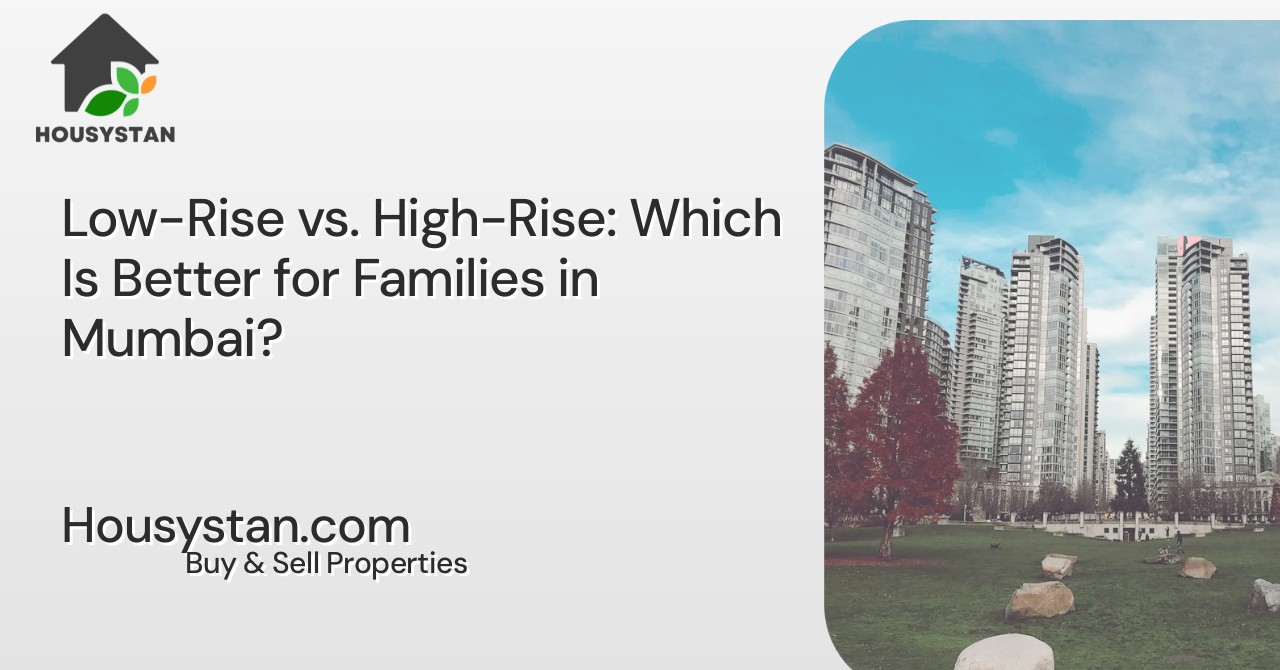Low-Rise vs. High-Rise: Which Is Better for Families in Mumbai?
Read latest blogs and articles from Housystan

The Information mentioned here was last updated on:
4/1/2026Choosing between low-rise and high-rise apartments is a crucial decision for families looking to settle in Mumbai. This bustling metropolis offers a diverse range of residential options, each with unique advantages tailored to different family needs. Understanding the differences between low-rise and high-rise living can help you select the perfect home for your loved ones in Mumbai’s dynamic real estate landscape.
Low-rise buildings, typically up to four floors, provide a more intimate community atmosphere. Families living in these residences often enjoy greater privacy, easier access to outdoor spaces, and closer relationships with neighbors. For children, these layouts offer more opportunities for safe play areas and green zones. Additionally, low-rise structures generally experience less congestion in common areas and elevators, making daily routines smoother for households with young kids or elderly members.
On the other hand, high-rise apartments are synonymous with modern urban living in Mumbai. These towering structures, frequently exceeding ten floors, boast stunning city views and premium amenities. Many high-rise complexes feature well-equipped gyms, swimming pools, children’s play zones, and advanced security systems. For families seeking convenience and a luxurious lifestyle, high-rise buildings in neighborhoods like Powai, Worli, or Bandra offer unmatched comfort and accessibility to Mumbai’s commercial hubs, top schools, and healthcare facilities.
- Verified Tenants/Buyers
- Unlimited Property Listing
- Zero subscription/charges fee
When deciding between low-rise and high-rise options in Mumbai, families should consider factors such as safety, accessibility, community engagement, and proximity to essential services. Low-rise homes may be preferable for those valuing tranquility and green surroundings, commonly found in areas like Chembur or Mulund. Conversely, high-rise residences are ideal for families who prioritize modern amenities, panoramic vistas, and a vibrant social environment, prevalent in localities such as Andheri, Lower Parel, or Navi Mumbai.
Ultimately, both low-rise and high-rise apartments present distinct benefits for families in Mumbai. By evaluating your lifestyle preferences, budget, and desired neighborhood, you can make an informed decision that ensures happiness and well-being for your entire household in this thriving city.